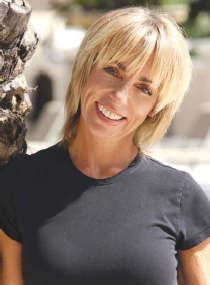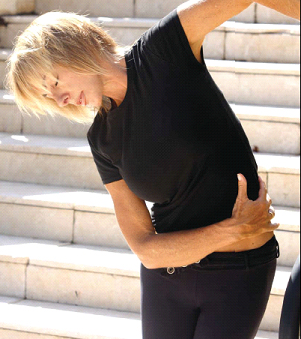Health & Fitness
Flexibility – The Long and Short of It
By Cheryl Alker
Many of us are striving to become physically fit, but what is true physical fitness and how do we achieve it?
The President’s Council on Physical Fitness and Sports – a study group sponsored by the U.S. Government – declines to offer a simple definition. Instead, it has named the five following components:
- Body Composition
- Cardiovascular Fitness
- Flexibility
- Muscular Endurance
- Muscle Strength
Therefore, to be truly physically fit, all of the above five referenced should be addressed.
Over forthcoming issues of Around Wellington we will dissect each individual component, its definition, and how to safely and effectively train to achieve it.
Flexibility
Flexibility is the most underestimated component and the one people least know how to achieve effectively. The definition of flexibility is range of movement at a joint. Whilst this definition clearly refers to the bones, it is the muscles that effect the movement of each joint. Therefore, it is the muscles that need to be stretched to achieve full and functional range of movement.
When muscles are short and tight they draw bones closer together, resulting in poor range of movement, poor posture, poor functionality and often pain and discomfort.

There are many types of stretching, but to achieve increased flexibility static (held) stretching is the most effective.Understanding where the muscle you are stretching starts(origin), where it finishes (insertion) and how it affects the movement of the joint is vital to achieving success. A basic anatomy book will show you this, or, if you go to a gym, ask your trainer – if they don’t know find another trainer or gym QUICKLY!
Benefits of Stretching
- Stretching increases flexibility. Flexible muscles can improve your daily performance. Tasks such as lifting, bending, carrying shopping bags and hurrying to catch a bus become easier and less tiring.
- Stretching improves range of motion. A good range of motion at the joint will keep the joint healthy promoting natural lubrication of the joint. Mobility also promotes balance and you will become less prone to injury − especially as you age.
- Stretching improves circulation. Stretching increases blood flow to your muscles, which in turn can speed recovery after muscular injury.
- Stretching improves posture. Frequent stretching allows the skeleton to sit in neutral alignment (the way it was intended). Short tight muscles draw bones closer together and force the body out of alignment, leading to lower and upper back problems, neck, shoulder and jaw pain .
- Stretching can relieve stress. Stretching relaxes the tense muscles that often accompany stress.
- Stretching can change your body shape. Stretching can literally lift the body opening out the shoulder girdle, which in turn lifts the ribcage reducing the waistline, lifting the buttocks and increasing energy levels.
- Stretching may help prevent injury. Increased range of motion at the joint can protect you from injury.
- Stretching enhances sport performance. Improved joint mobility is essential in all types of sporting activities.
How To Stretch For Results
- Target major muscle groups. Focus on the front and back of the thighs, calves, buttocks, chest also stretch muscles that you routinely work every day.
- Warm up first. Cold muscles will increase your risk of injury. Take a short brisk walk and mobilize your joints first or stretch after your workout.
- Hold stretches for at least one minute. It takes time to lengthen tissues safely. Also, time must be allowed for correct alignment. Continually assess body alignment and learn to explore the muscle by changing leg arm or upper body position and weight applied.
- Don’t bounce. Bouncing as you stretch can cause small tears in the muscle. These tears leave scar tissue as the muscle heals which tightens the muscle even further – making you less flexible and more prone to pain.
- Focus on a pain-free stretch. Expect to feel tension while you are stretching, but not pain. You should take the stretch to the point where you feel tension and then hold it; the feeling should go away after approximately 20 seconds. However, if it increases and the leg starts to shake, back off and start the process again, but more slowly this time.
- Relax and breathe freely. Do not hold your breath while you are stretching. Results will be far greater if you increase the stretch towards the end of the out-breath.
- Learn some basic anatomy. Understand where the muscle you are stretching starts (origin) and where it finishes (insertion), and learn how to move these two points away from each other.

How often you stretch is entirely up to you. As a general rule, stretch whenever you exercise; however, do not fall into the trap of only allocating three minutes at the end of your workout − dedicate the time and focus it deserves. Far greater results will be achieved when a mind/body connection is made. If you are fortunate enough to have a personal trainer, ask them if they can dedicate at least one of your sessions per week solely to flexibility. Ask your gym if they will offer pure flexibility classes, and find a trainer who specializes in flexibility training. If you do not exercise regularly, you may want to stretch at least three times a week. If you have a problem area, such as tightness in your lower or upper back, you may want to stretch every day or even twice a day.
You don’t need to be a member of gym to stretch; you can do it at home, at work or outside − there are no limits. You should exercise caution if you have a chronic condition or an injury. For example if you have a strained muscle, stretching it may cause further harm. Consult with your doctor or a physical therapist if in doubt.
Cheryl Alker specializes in flexibility training, facial exercises and postural alignment. Her 26-year career began as a group fitness and personal trainer. She has lectured and directed fitness training programs in both Europe and the USA and was an advisor for a British governmental health promotion program. Alker and her company Stretch Results International continues to work with a select clientele from a base in Palm Beach County, certifying health professionals in her results-based stretching program, educating consumers through public speaking and offering consultation to clients who wish to lose their muscular pain and gain flexibility to achieve full and active lifestyles. Her program has been accredited with The National Association of Sports Medicine, The American Council of Exercise, The National Strength and Conditioning Association and The Florida Physical Therapy Association. For more information about professional continuing education and consultation options, please call Cheryl at (561) 889 3738 or visit www.stretchresults.com.

